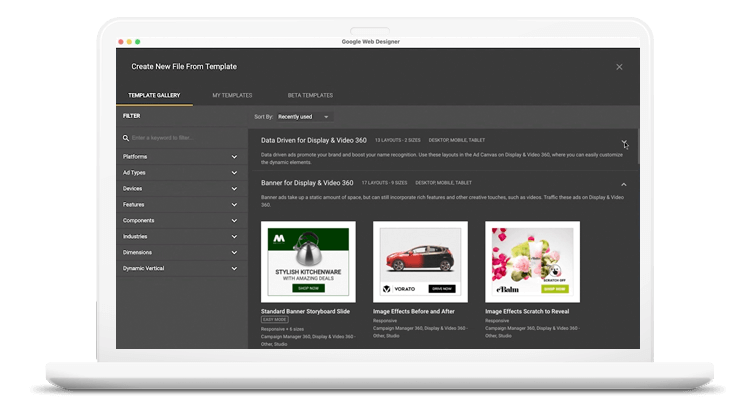Recognizing the Role of Typography in Website Design Excellence
Recognizing the Role of Typography in Website Design Excellence
Blog Article

Crafting a User-Friendly Experience: Vital Components of Reliable Site Style
Important elements such as a clear navigating framework, responsive style principles, and quick loading times serve as the foundation for involving customers effectively. Recognizing the hidden elements that contribute to efficient design can lose light on just how to enhance individual contentment and interaction.
Clear Navigation Structure
A clear navigating structure is essential to reliable internet site design, as it straight affects individual experience and engagement. Customers must be able to situate details effortlessly, as intuitive navigating reduces aggravation and urges exploration. An efficient layout allows site visitors to recognize the connection in between different web pages and content, bring about longer site brows through and boosted interaction.
To attain clarity, designers need to utilize acquainted patterns, such as top or side navigation bars, dropdown food selections, and breadcrumb trails. These aspects not only improve use yet likewise give a feeling of alignment within the website. Maintaining a constant navigation framework throughout all web pages is essential; this experience assists individuals prepare for where to discover wanted details.
It is also vital to restrict the variety of menu products to stay clear of frustrating individuals. Focusing on one of the most crucial areas and using clear labeling will certainly lead site visitors successfully. Additionally, incorporating search functionality can further aid individuals in finding certain web content rapidly (website design). In summary, a clear navigating framework is not merely a layout option; it is a tactical aspect that dramatically affects the overall success of an internet site by cultivating a delightful and reliable individual experience.
Responsive Style Concepts
Effective web site navigation sets the phase for a smooth user experience, which comes to be even much more crucial in the context of receptive style principles. Responsive style makes sure that web sites adjust fluidly to various display sizes and orientations, enhancing access throughout devices. This versatility is attained through versatile grid designs, scalable photos, and media questions that enable CSS to readjust styles based on the device's attributes.
Trick principles of receptive design include fluid layouts that make use of percentages instead of taken care of units, making sure that components resize proportionately. Additionally, utilizing breakpoints in CSS makes it possible for the layout to shift efficiently in between various tool dimensions, maximizing the format for each screen type. Using responsive images is likewise essential; images must instantly adapt to fit the screen without losing high quality or triggering design changes.
In addition, touch-friendly user interfaces are crucial for mobile customers, with appropriately sized buttons and instinctive motions enhancing user communication. By incorporating these principles, designers can develop sites that not just look visually pleasing yet likewise offer interesting and practical experiences across all devices. Ultimately, effective receptive layout fosters customer complete satisfaction, minimizes bounce rates, and motivates much longer interaction with the content.
Fast Loading Times
While users increasingly anticipate web sites to pack quickly, quick packing times are not just a matter of ease; they are important for retaining site visitors and you could check here enhancing overall customer experience. Research indicates that customers normally abandon web sites that take longer than 3 seconds to lots. This abandonment can result in increased bounce prices and lowered conversions, ultimately damaging a brand name's credibility and earnings.
Rapid packing times boost user engagement and complete satisfaction, as site visitors are much more likely to discover a site that responds quickly to their interactions. In addition, online search engine like Google focus on speed in their ranking formulas, suggesting that a slow site may battle to attain visibility in search outcomes.

Instinctive Interface
Rapid loading times prepared for an interesting online experience, however they are just component of the equation. An instinctive interface (UI) is important to ensure visitors can browse a web site effortlessly. A properly designed UI enables individuals to attain their objectives with very little cognitive load, fostering a seamless communication with the site.
Crucial element of an instinctive UI include constant design, clear navigation, and recognizable icons. Uniformity in style components-- such as color pattern, typography, and button styles-- assists customers understand how to interact with the web site. Clear navigating frameworks, consisting of sensible menus and breadcrumb trails, enable users to find info swiftly, lowering disappointment and boosting retention.
In addition, responses systems, such as hover impacts and filling indications, notify individuals regarding their actions and the site's reaction. This transparency cultivates trust fund and urges continued involvement. Focusing on mobile responsiveness makes sure that customers take pleasure in a cohesive experience throughout devices, providing to the varied ways audiences access web content.
Obtainable Material Standards

First, use uncomplicated and clear language, avoiding jargon that might puzzle visitors. Stress appropriate heading structures, which not only aid in navigation yet additionally help screen visitors in interpreting material pecking orders properly. In addition, supply alternative text for images to share their definition to individuals who depend on assistive technologies.
Comparison is an additional critical component; make sure that text attracts attention versus the background to enhance readability. In addition, make certain that video clip and audio content includes inscriptions and transcripts, making multimedia available to check this those with hearing impairments.
Finally, integrate keyboard navigability right into your layout, enabling users that can not use a mouse to access all website features (website design). By adhering to these easily accessible content standards, web designers can develop inclusive experiences that deal with the demands of all users, eventually boosting individual engagement and satisfaction
Conclusion
To conclude, the assimilation of crucial elements such as a clear navigation framework, responsive design principles, quick loading times, an instinctive customer interface, and accessible content standards is crucial for producing a straightforward internet site experience. These parts collectively enhance usability and engagement, making certain that individuals can effortlessly browse and connect with the site. Focusing on these design components not only improves general fulfillment but likewise fosters inclusivity, accommodating varied user requirements and preferences in the electronic landscape.
A clear navigating framework is fundamental to reliable site layout, as it straight affects user experience and interaction. In recap, a clear navigating structure is not just a design option; it is a critical aspect that significantly influences the general success of a website by cultivating a effective and delightful customer experience.
Moreover, touch-friendly user interfaces are vital for mobile customers, with adequately sized switches and user-friendly motions improving individual communication.While individuals significantly expect web sites to load rapidly, quick packing times are not just an issue of ease; they are important for keeping site visitors and enhancing total individual experience. website design.In verdict, the integration of necessary elements such as a clear navigating framework, responsive style principles, quick loading times, an user-friendly individual interface, and obtainable material standards is essential for developing a straightforward web site experience
Report this page